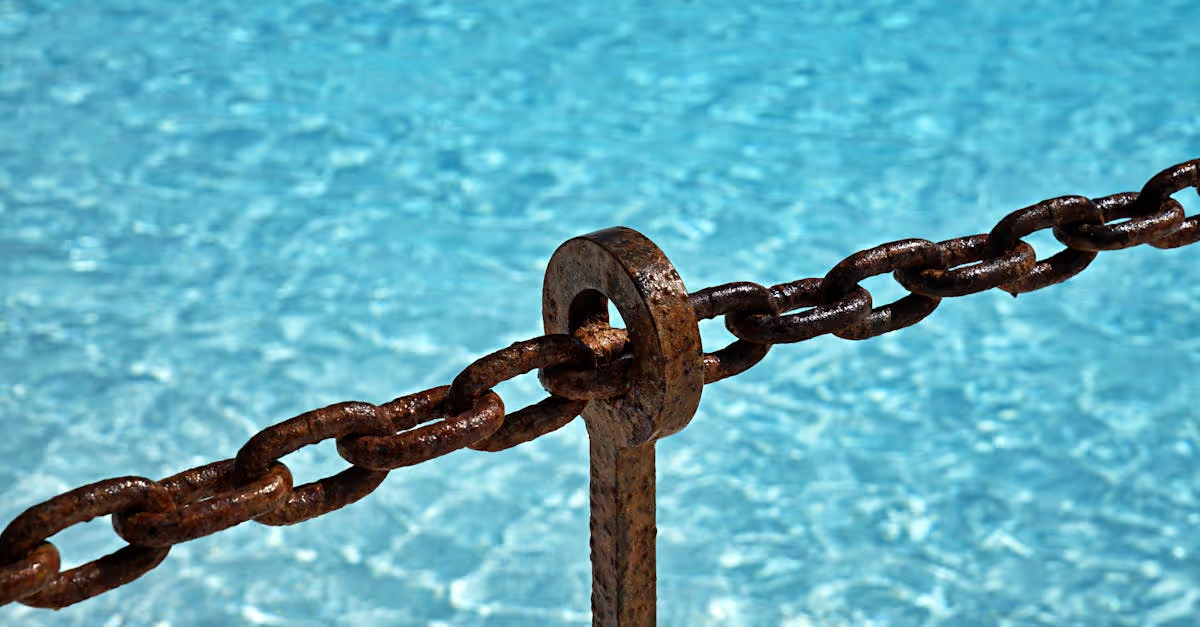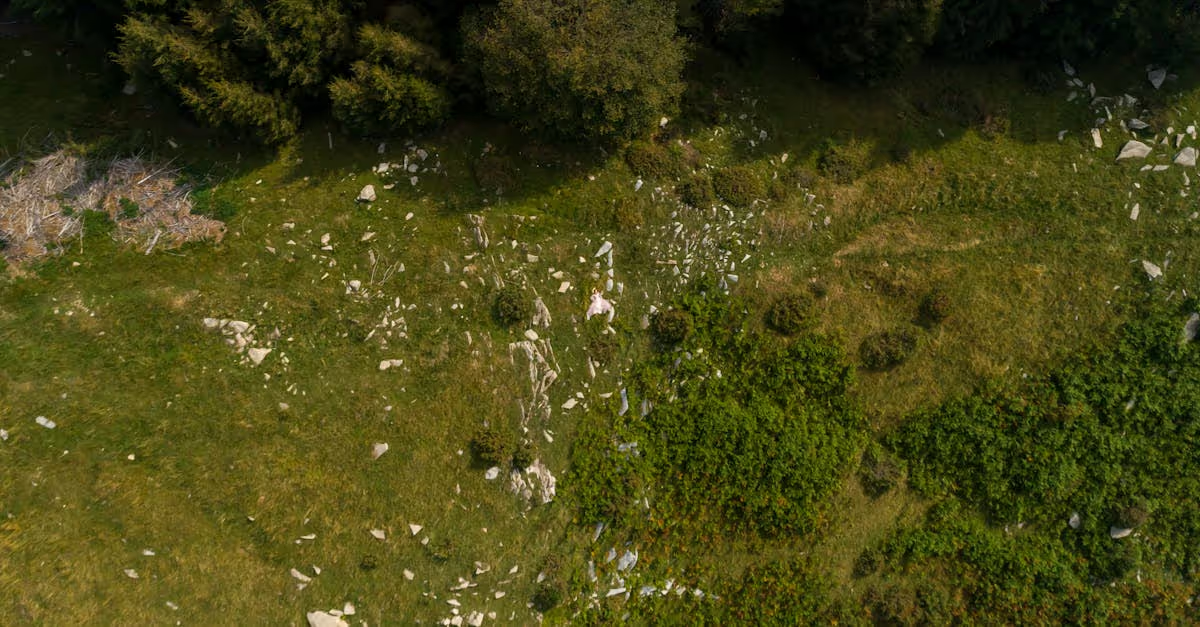Key Takeaways
- Proper Winterization is Essential: Closing your pool correctly protects your investment and prevents costly repairs, potentially saving you up to $1,500.
- Chemical Balance Matters: Maintaining proper chemical levels reduces algae growth and ensures clear water, enhancing your pool's condition for spring reopening.
- Key Chemicals for Winterizing: Use algaecides, pH balancers, and chlorine to effectively manage water quality and prevent contamination during the off-season.
- Steps for Effective Closure: Follow a specific sequence when adding chemicals—apply shock first, then algaecide, and finally balance the pH to promote a healthier pool environment.
- Safety Precautions Are Crucial: Always use gloves and goggles when handling chemicals, and follow guidelines to ensure a safe winterization process.
- Regular Testing is Key: Frequently check water chemistry levels before winter closure to maintain an optimal balance and avoid complications in the spring.
As winter approaches, closing our pools properly is crucial to protect our investment. Did you know that improper winterization can lead to costly repairs, with some estimates reaching up to $1,500? Using the right chemicals not only safeguards our pool but also ensures a smooth reopening in the spring.
In this guide, we’ll explore the essential chemicals needed for winterizing our pools, from algaecides to pH balancers. By understanding the role of each chemical, we can prevent algae growth and maintain water clarity, making our spring cleanup much easier. Let’s dive into the best practices for closing our pools and keep them in top shape during the chilly months ahead.
Understanding Pool Chemistry
Chemical balance is crucial when winterizing a pool. Proper management of chemicals prevents issues like algae growth and water cloudiness. If we get it right now, we’ll save time and money in the spring.
Importance of Proper Chemical Balance
Chemical balance impacts water clarity and safety. Unbalanced water can lead to corrosion, staining, and equipment damage. We should maintain pH levels between 7.2 and 7.6. Alkalinity should rest between 80 and 120 ppm, while calcium hardness needs to be 200 to 400 ppm.
When we maintain these levels, we lower the chances of algae growth. We all want to avoid that green swamp look when we open our pool, right? By keeping chemicals in check, we simplify the spring reopening process. A clear and balanced pool welcomes us back after the winter months.
Common Chemicals Used for Pool Closing
Several chemicals play essential roles during the closing process.
- Algaecides: These target and kill algae, preventing winter blooms.
- pH Balancers: If pH is too low, add a sodium bicarbonate product. If it’s too high, use dry acid.
- Chlorine: Keeping chlorine levels stable ensures bacteria control. A shock treatment before closing can greatly help.
- Winterizing Kits: These often contain everything needed for winter closure.
Using the proper chemicals supports a successful and easy reopening. Plus, we can laugh at the funny memories of trying to clean up an algae-infested pool instead of swimming! What chemical measures do you take while closing your pool? Sharing our tips can make winterizing less of a chore.
Preparing Your Pool for Winter
We prepare our pool for winter by using the correct chemicals and following proper maintenance steps. Let's focus on some critical tasks to get our pool ready for the chilly season.
Cleaning and Maintenance Steps
Cleaning our pool marks the first step in winter preparation. We start by skimming leaves and debris from the surface, followed by brushing walls and tiles to prevent algae buildup. Next, we vacuum the pool floor thoroughly, sending unwanted dirt and grime away.
After that, we check and clean the pool filter—this keeps the water clear. Once we finish cleaning, we add the necessary chemicals to balance the water before closing. This step prevents issues like algae growth during winter.
Adding antifreeze to plumbing lines is crucial as well. Non-toxic antifreeze helps protect against freezing, ensuring our plumbing remains intact until spring. If we miss this task, we might face unpleasant surprises when reopening the pool.
Testing Water Chemistry Levels
Testing water chemistry levels is essential before winterizing our pool. We target specific ranges for pH, alkalinity, and calcium hardness. Maintaining pH levels between 7.2 and 7.6 ensures safe swimming and protects equipment.
Alkalinity should sit between 80 and 120 ppm, which stabilizes pH levels and prevents fluctuations. Calcium hardness must stay between 200 and 400 ppm to avoid corrosion or scaling on surfaces.
Types of Chemicals Used
When closing our pools for winter, understanding chemical use is vital. The right chemicals maintain the pool's condition during the off-season. Here’s a breakdown of key chemicals and their purposes.
Algaecides: Importance and Types
Algaecides play a crucial role in winterizing pools. They stop algae growth, preventing messy algae blooms in spring. This saves both time and money on clean-up efforts. Three primary types of algaecides exist:
- Quats: These quaternary ammonium compounds are effective and frequently used.
- Polymers: Non-copper options like the 60% Polyquat Algaecide are powerful and non-staining.
- Copper Based: This type acts as an herbicide and fungicide, but caution is needed to avoid staining.
Choosing the right algaecide makes a significant difference in our pool's spring readiness.
Shock Treatments: How and When to Use
Shock treatments also play an important part in pool winterization. They help eliminate contaminants and improve water clarity. Applying shock at closing time benefits our pool significantly.
Shock treatments work by rapidly increasing chlorine levels, neutralizing contaminants such as bacteria and chloramines. We should apply shock treatments after balancing water and right before closing. If the water looks cloudy or has an unusual smell, considering shock treatment before winter closer can restore balance.
As we prep our pools, we remember that timing is key. Regularity matters; we can follow a shock schedule to maintain cleanliness during winter. Enjoying a clean, algae-free pool upon reopening in spring brings us peace of mind. Each proactive step we take helps us enjoy a hassle-free spring.
Steps for Closing Your Pool
Preparing our pool for winter involves a series of essential steps to maintain its condition. The right approach helps avoid issues and simplifies reopening in spring.
Adding Chemicals in the Right Order
Adding chemicals in the correct sequence plays a vital role in closing our pool. Start with pool shock, which kills bacteria and eliminates contaminants. Choose a chlorine-based shock or a chlorine-free option. After shocking, add algaecide to prevent algae growth during winter. Most algaecides contain copper or polymer compounds that remain effective throughout the colder months. Follow this with pH balancers to maintain levels between 7.2 and 7.6, crucial for protecting both the pool structure and equipment. Finally, consider using a winterizing kit that often includes various essential chemicals for comprehensive coverage. By adhering to this sequence, we promote a healthier pool environment, making for a smoother spring reopening.
Safety Precautions When Handling Chemicals
Taking safety precautions is critical while managing pool chemicals. Always wear gloves and safety goggles to protect our skin and eyes from irritation. Read the labels on chemicals for specific guidelines and hazard warnings. Make sure to store the chemicals in a cool, dry place, away from direct sunlight and out of reach of children and pets. Mixing different chemicals can create harmful reactions, so never combine products unless explicitly stated. If we’re unsure about any chemicals, contacting a professional can provide clarity and peace of mind. In brief, following these precautions ensures that we maintain a safe and enjoyable pool environment while winterizing effectively.
Conclusion
Taking the right steps to winterize our pools can save us from costly repairs and ensure a smooth reopening in spring. By using the correct chemicals and maintaining proper water chemistry, we protect our investment and keep our pools in top shape.
The process may seem daunting but following best practices makes it manageable. With a little preparation and the right products, we can enjoy peace of mind during the winter months. Let’s embrace these guidelines and make our pool closing experience as effortless as possible.
Frequently Asked Questions
Why is it important to winterize a pool?
Properly winterizing a pool is essential to prevent costly repairs that can reach $1,500 or more. A well-prepared pool avoids issues like algae growth, water cloudiness, and damage to equipment during the cold months.
What chemicals are recommended for winterizing a pool?
For effective winterization, use algaecides, pH balancers, chlorine, and a winterizing kit. These chemicals help maintain water clarity and prevent algae growth, ensuring a smooth reopening in the spring.
What pH levels should I maintain before closing my pool?
Before closing your pool, ensure that the pH levels are between 7.2 and 7.6. Correct pH levels help prevent corrosion, staining, and equipment damage during winter.
How do I clean my pool before winterizing?
To clean your pool effectively, skim debris from the surface, brush the walls, vacuum the floor, and clean the pool filter. These steps help maintain water quality and simplify reopening in the spring.
What is the order for adding chemicals during winterization?
When winterizing your pool, add the chemicals in this order: pool shock, followed by algaecide, pH balancer, and then a winterizing kit if needed. This ensures optimal effectiveness of each chemical.
Why is antifreeze necessary for pool plumbing?
Adding antifreeze to plumbing lines is crucial as it prevents freezing and protects pipes from damage during the winter months. This helps avoid costly repairs when reopening the pool.
What types of algaecides should I use?
The three primary types of algaecides for winterizing are quats, polymers, and copper-based options. Each type has its own benefits and should be chosen based on specific pool conditions and needs.
Should I shock my pool before winterizing?
Yes, applying a shock treatment before closing your pool is recommended. It helps eliminate contaminants and improve water clarity, ensuring a clean pool when you reopen in the spring.





.svg)
.svg)